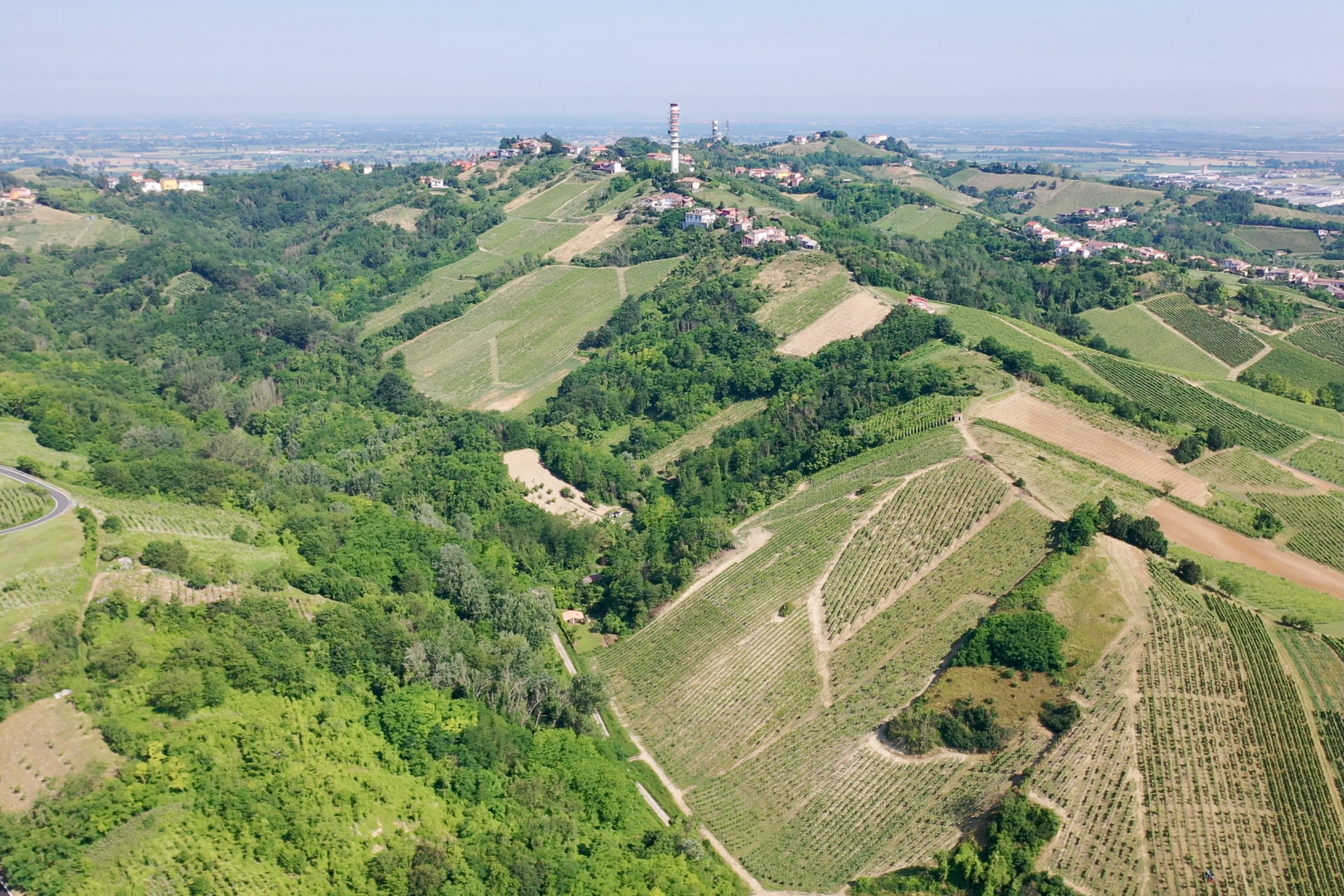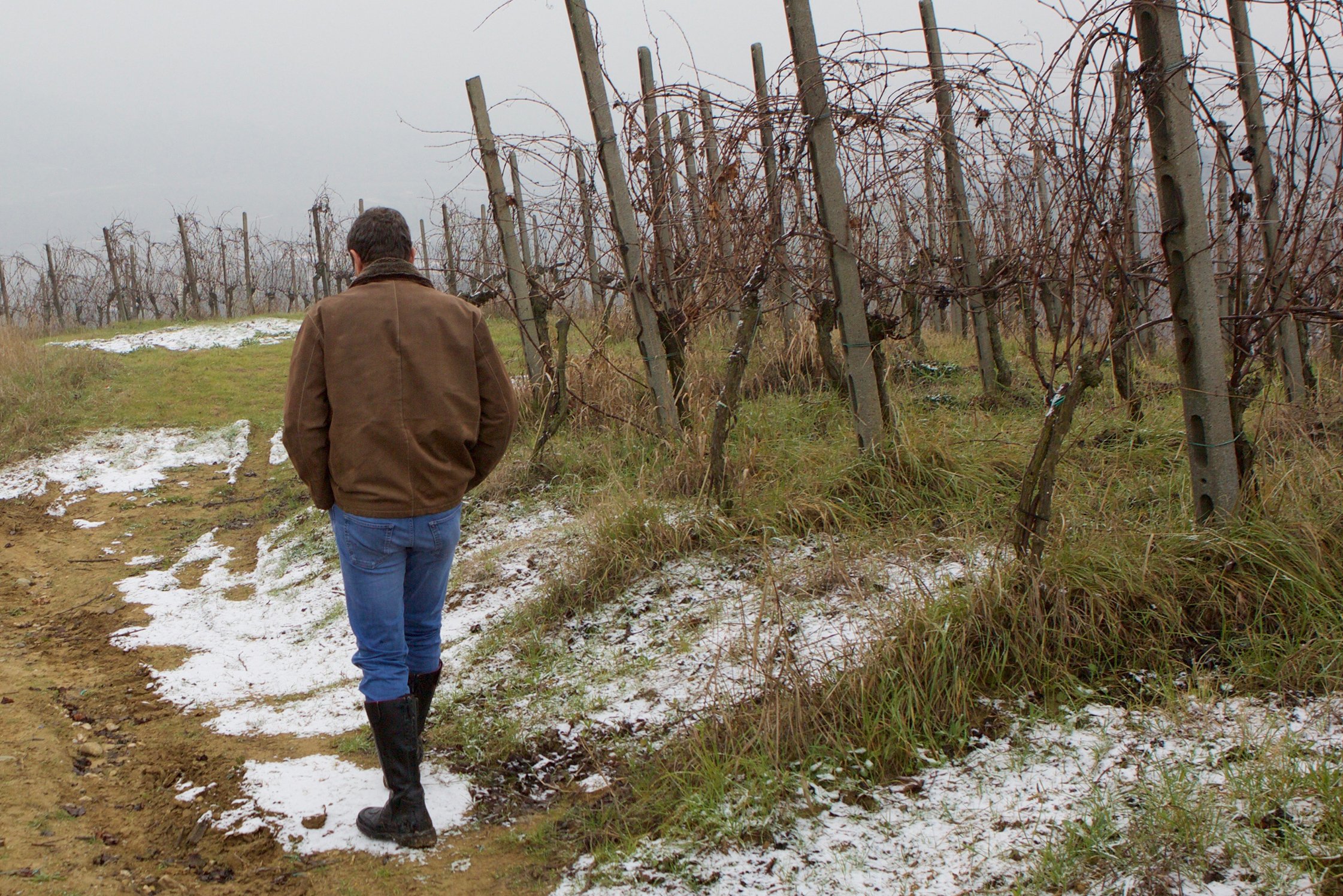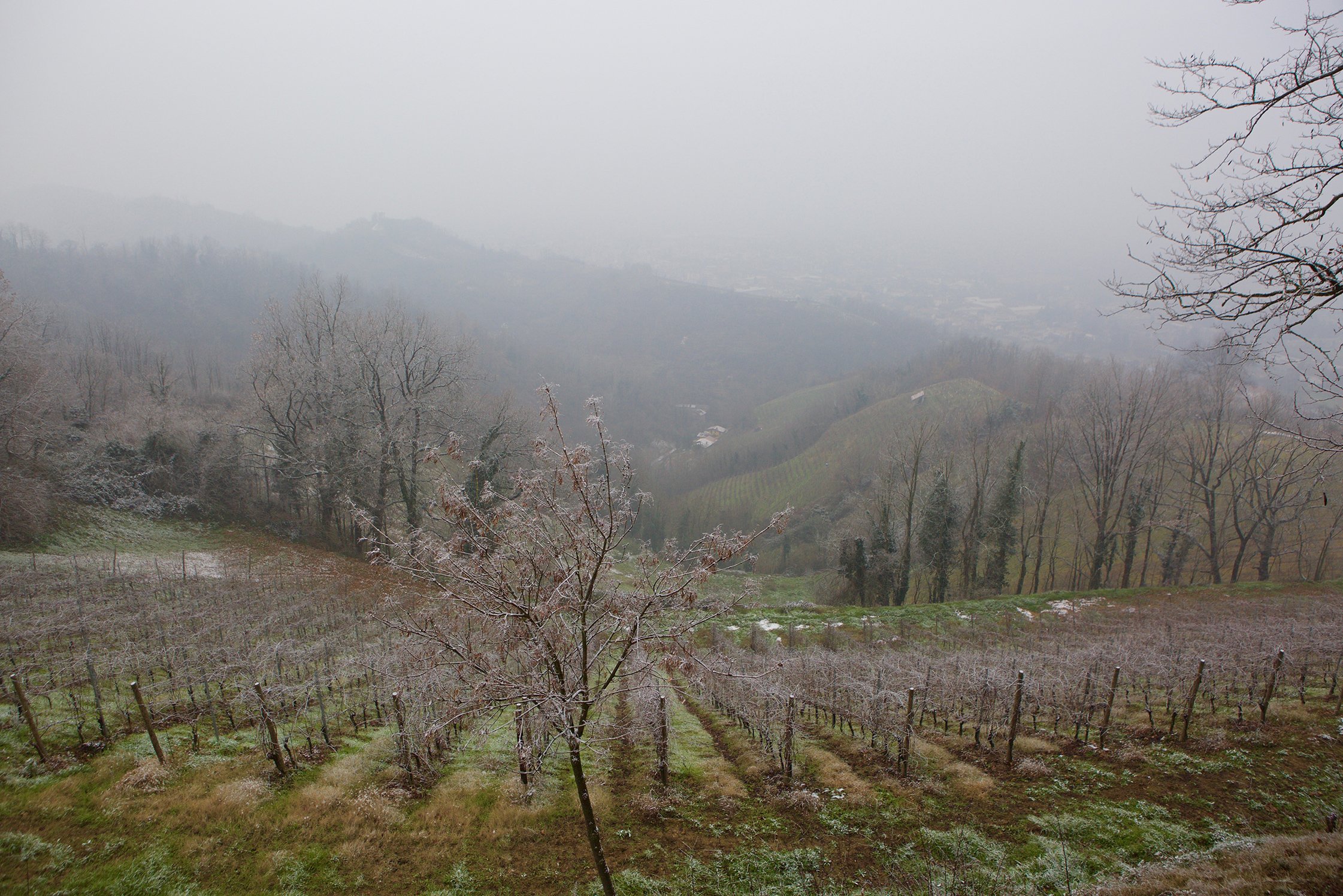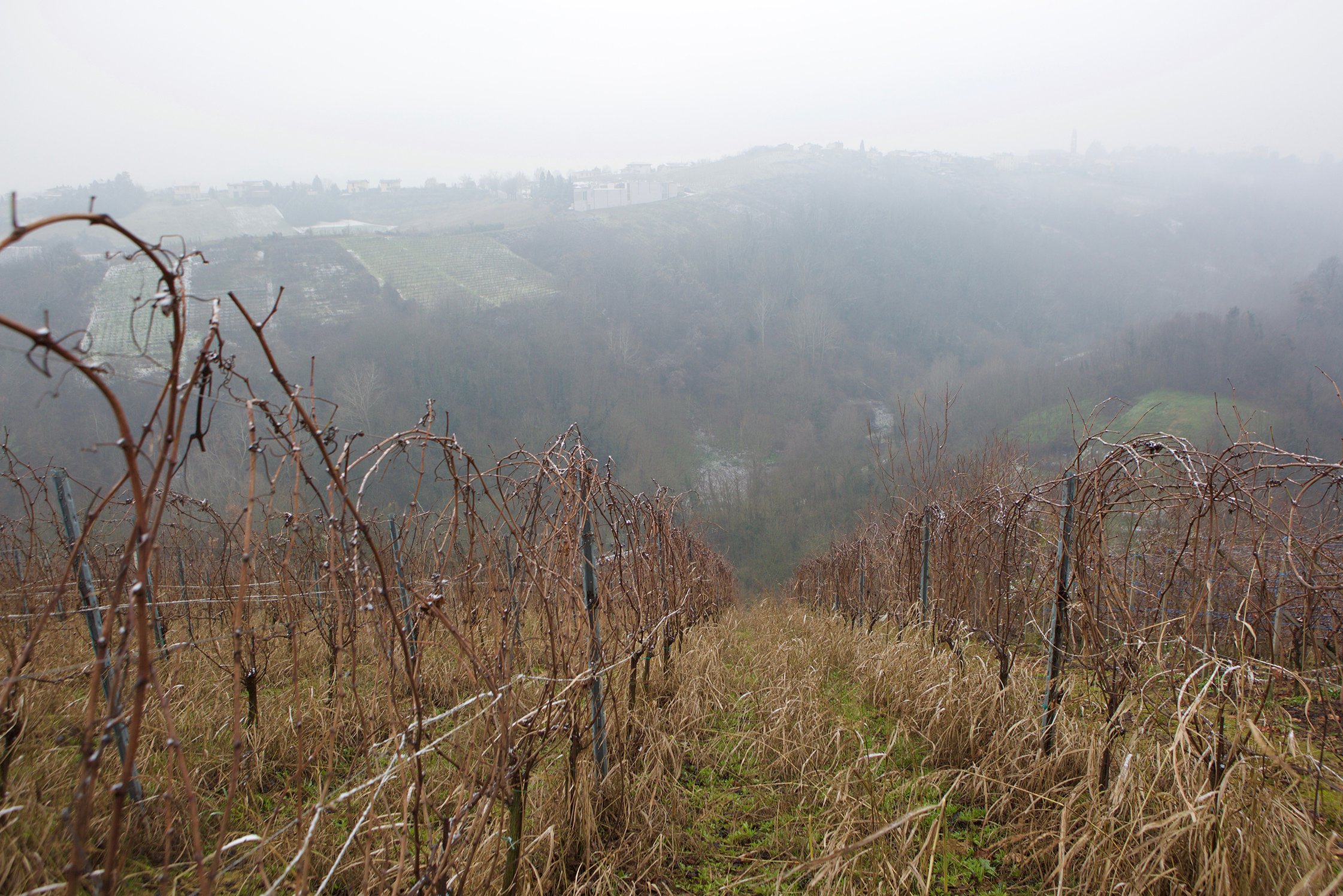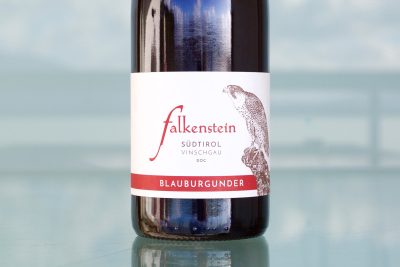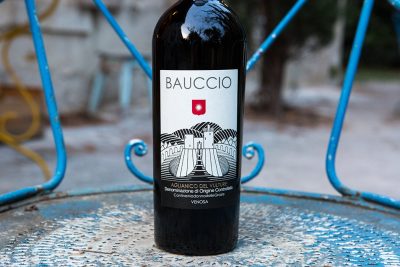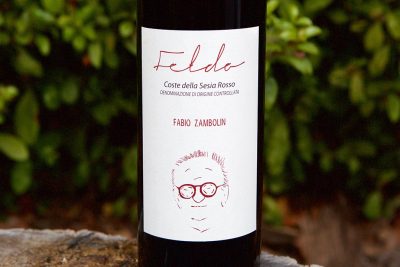The most compelling wines are the most honest. They aren’t the great pretenders, all but neutered of their history to create a global-style brand, nor a wine customized to satisfy the natural wine purists who put ideology above all, to the detriment of the product. No matter the current moda, the most authentic and interesting wines sing dialect and teach historical context, and invite our creative minds into their mystery—their bedrock and soil, their genetic heritage, the seasons and vintages, the surrounding woods, the life inside the vineyards and the dirt, and the echo of their nature-conscious ancestors. Their wines guide us into the fantasyland of their madness, and their genius. They are the originals: they are Italy’s Emidio Pepes, Paolo Beas, Lorenzo Accomassos and Lino Magas.
A native of the Oltrepò Pavese, Andrea Picchioni started his business in 1988, from scratch, because his family wasn’t in the wine trade. In Italy, it’s not easy to begin anew without some history already in place, but to him this may well be an advantage. He saw the opportunity to circumvent the conflict between the often times difficult transfer of power when a family business goes to the next generation.
Picchioni’s close friend, Roger, who speaks marvelous English and translates for him, explained that to go alone on his journey meant that he could do what he wanted. “His intention was not to follow the Piemonte model an hour by car to the west, or the local one, but to work without prejudice, to be a free mind and his own man. He entered with a touch of innocence and a dream shared with a few others in the area to rediscover the nearly forgotten legacy of Buttafuoco.”
Enter Lino Maga.
“Lino is a sort of mythical, oracle-type character,” Roger continued. “He speaks few words and often within enigmatic phrases. His cult celebrity grew in the 1960s with the praises of Italy’s top wine authorities of the time for his Barbacarlo and Montebuono wines grown in this part of the Oltrepò Pavese (we’ll call it OP for simplicity’s sake). A sort of national symbol, he represented the true and traditional artisanal countryside winegrower, always a cigarette in one hand and wine in the other. A close friendship between them developed, and in Picchioni, Lino began to see a sort of son, a spiritual heir to his ideas and historical context.”
Picchioni’s wines are like Maga 2.0, but still uniquely Picchioni. In their youth they carry a sort of carefree flamboyance of raw and vigorously youthful aromas and tastes. They are more precise in craft than the unapologetically rustic wines of his friendly mentor but also require a little patience once opened. Below the dense energy current of their youth, they foreshadow with clarity the extension of a Maga-like legacy, an ode to the past with its background of earthy and medicinal smells, metals, quirks and x-factor, all the dialect of Buttafuoco (Spit Fire, in Italian).
Without the handicap of broken soils from decades of chemical farming abuse and the ability to replant with all massale selections from this area, Picchioni’s wines bring a clear notion of what all the hubbub of Buttafuoco was about centuries ago. Croatina, Barbera, Uva Rara and Ughetta (the same as Piemonte’s Vespolina) are the indigenous grapes included in the “concept” of Buttafuoco. It’s a historical style of wine that its DOC (Buttafuoco dell’Oltrepò Pavese) states must be a minimum of 25% Barbera and 25% Croatina, with a maximum of 65% of either in the blend. Ughetta di Canneto (also known as Vespolina), which Picchioni often refers to as Ughetta di Solinga to distinguish the heritage of his vines, along with Uva Rara are allowed but not required. It’s a little confusing to grasp in some ways, but the rules are quite flexible for what’s there so long as they meet the minimum and maximum of each grape permitted.
Picchioni’s respect for the land is deep and extremely progressive from an ecological standpoint, not only in the OP, but in the world over. Well beyond the expectations of even “natural” wine farming, everything is organic certified, and the weed management is made by hand with a no-till farming practice. This minimizes erosion in the vineyard’s soil and curbs carbon emissions—an organic, biodynamic and natural wine detail all too often overlooked, or conveniently ignored.
It may be good for our bodies to drink more natural wines (wines with limited amounts of unnatural additives), but carbon emissions are killing the planet and tilling the soil is one of the worst things for the environment because of its massive release of carbon into the atmosphere. Picchioni tries to offset his carbon footprint by putting all the nature taken from his vineyards (save the wine itself), like grape pomace and mulched vine clippings, back into the vineyards and employing mechanization only when necessary. Furthermore, much of the property he owns is still forested in order to compensate for his carbon emissions. That’s true sustainable farming!
In the cellar he co-ferments the grapes, as it was done in the past—a technique demonstrated in many cellars that seemingly renders a more seamless wine without an obvious separation between the blending materials in the finished product. His preference is for more neutral fermentation in concrete vats and aging in concrete and large, old botti. He destems everything and likes to do extended fermentation maceration on the two top wines, Rosso d’Asia and Bricco Riva Bianca (both have cute labels designed by his daughter when she was a child), for a minimum of two months.
He also makes traditionally crafted, sparkling red wines. On occasion he upgrades some of the old wood vessels in the cellar—like he did in 2015, with the brunt of the new wood being felt on the Rosso d’Asia that year—and he only fines or filters wines that go to market shortly after harvest, like the Cerasa red. The sulfite levels are generally low with nothing exceeding sixty parts per million (60mg/l).
What Andrea Picchioni began in 1988 is the attempted recapture of the voice of the old Buttafuoco wine legend. The abandoned vineyards he began to replant are so long and vertigo inducing when viewed from above that with one look at them it’s easy to understand why they may have been some of the first left behind and the last resurrected. But Picchioni has just the right amount of crazy required to tame these hills.
It was the week before Christmas when my wife (also named Andrea) and I were on our way from the Amalfi Coast to the south of France. The impression of Picchioni’s wine was fresh in my mind and I could still almost taste them from when I tried them months earlier. We arranged a meeting on our way on what happened to be the first day of blizzard-like conditions that kicked off Italy’s much needed winter of 2018.
The snowy wind was bitterly cold as we stood with Picchioni at the top of the Rocca di Montalino, a castle on a stone hill. The caretaker, Picchioni’s friend, laughed as we quickly scurried up the long stone staircase and huddled into an outside corner next to the castle’s entrance and looked over a cliff at the view to get our bearings and better understand where we were in Italy. He pointed out that we were standing at the northernmost edge of Italy’s great Apennine mountain range—the skeleton of the entire Italian peninsula that runs about 870 miles toward the south and ends at the very tip of the boot in Calabria.
Oltrepò Pavese (again, we’ll call it OP for simplicity’s sake) is located in the far southwestern corner of Lombardia, a sort of appendage that is scrunched between Piemonte and Emilia Romagna and not so far from the border of Liguria. Lombardia is a region to the northeast, well known for its sparkling wines, with Franciacorta (little France) and Lambrusco, and further north is the Valtellina, an alpine country known for their red wines.
The OP is cold wine country and home to a lot of sparkling wines, both red and white, and Pinot Noir, a varietal that is best grown in cooler climates. There are few producers of note here, so I will focus on our protagonist, Andrea Picchioni and the microcosm of Buttafuoco. And while the OP is large and there is tremendous untapped potential within this sleeping giant, to the fine wine world it’s generally a wasted 20,000 acres of quite beautiful vineyard land churning out a good portion of Italy’s uninteresting cheap bulk wines (vino sfuso, in Italian) that thankfully mostly stays in Italy.
The communes of Buttafuoco are located about 100 miles directly east of Torino and 40 miles south of Milano, within two valleys. It begins with the northernmost towns Stradella and Broni, two of the seven Buttafuoco communes. Those two townships are on the flat Pianura Padana (Padana plains, or Po Valley) and vineyards on the hills above them to the south where the Apennines mountain range begins its stretch toward Sicily.
A few kilometers south off the plain and further into the OP is the Solinga Valley (Sun Valley), home to all of Andrea Picchioni’s ten hectares of resurrected vineyard land. They are shared between the communes of Canneto Pavese and Stradella but are some distance away from both towns and are unusual and frighteningly steep, with vine rows that go from top to bottom instead of side to side, a more common approach with steep vineyards like these in Northern Italy.
An amphitheater with an east end opening, the Solinga Valley is strong red wine country and the original home to the historic Buttafuoco wine. A document from 1861 verifies the name of this unique site as Vigna Buttafuoco, and it’s shared with only one other grower on the hill, Franco Pellegrini. (See a 3-D Google image of the Solinga Valley.) However, there are other steep, high quality vineyards inside the valley facing south that were not part of the original site that other growers maintain as well. The structure of the valley is able to hold onto the sun’s heat for a while longer (before the cold rolls in) than in the more exposed sites further south and outside of the Buttafuoco communes, which are more fitted for Pinot Noir or a different kind of wine altogether. The result of the heat is stressed vines that render wines of strength and depth, with the shoulders and tannins provided by Croatina and the acidic drive and bright intensity from Barbera—together an extremely compelling pair. Interestingly, Croatina also makes for good sparkling red because the bubbles balance out the impact of the strong tannins and acidity—like the black Vinhão wines from Portugal’s Vinho Verde, one of my guilty pleasures. (See the 3-D Google map image of original Buttafuoco site here.)
There are other grapes allowed but not required for a wine labeled Buttafuoco dell’Oltrepò Pavese. The more common of the two smaller blending parts in Picchioni’s cellar is Ughetta di Solinga, a massale selection specific to this valley, known as Vespolina in Piemonte; it brings spice and more balsamic notes to the wine. The other, not used in any of the three wines we import is Uva Rara, an aromatic, gentle red.
Italy’s Apennine Mountains vary in geologic settings with sedimentary, metamorphic and igneous rocks—all the major geological rock categories. In the OP it’s not so different than the Langhe hills, about one hundred miles to the west and home to the famous Barolo and Barbaresco appellations. It’s made largely of marine sediments with shale, sandstone and limestone marls. While there are similarities, it’s worth mentioning that the Langhe receives warm Ligurian Sea air from the south and the OP doesn’t, making this region cooler, despite the lower average altitude.
Picchioni’s organically farmed Buttafuoco vineyards are steep and mostly face south and southwest and reach altitudes of up to 220 meters, prime for still red wines. (See them here. All are on this south facing ridge.) Other areas can be over 600 meters, but are primarily used for sparkling wine production. Aside from the vineyards on the south face, the Solinga valley is full of wild, dense forest and this is felt and tasted in the nuances and energy of his wines. Residential dwellings are mostly set on ridges and not on the slopes. And by comparison to much of the OP, the vast majority of land inside the Solinga Valley is uncultivated and wild. It seems to have its own sort of flora and fauna community inside the amphitheater.
The soils in the Solinga Valley are compacted sands with a mix of small and medium-sized, extremely hard granite-like igneous cobblestones with a high content of quartz and loads of organic matter in the topsoil—a result of Picchioni’s no-till farming! Much of the bedrock deep below is a conglomerate composed of these quartz-rich, rounded rocks. Most of the sands in the lower section of his vineyards are mildly calcareous and further upslope there’s a more loamy mixture of sand and clay. In general, to the eye it may look homogeneous, but changes underground can be abrupt. -TV






